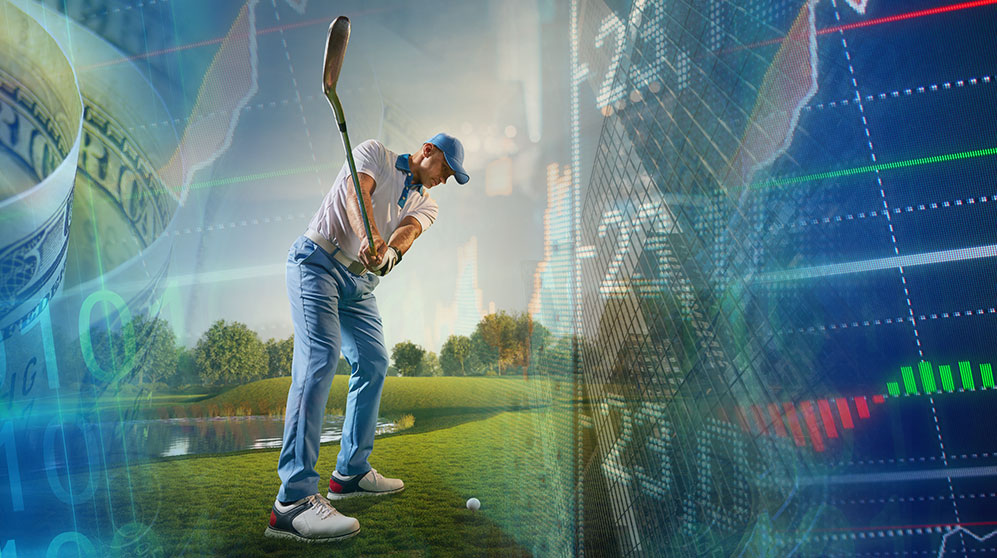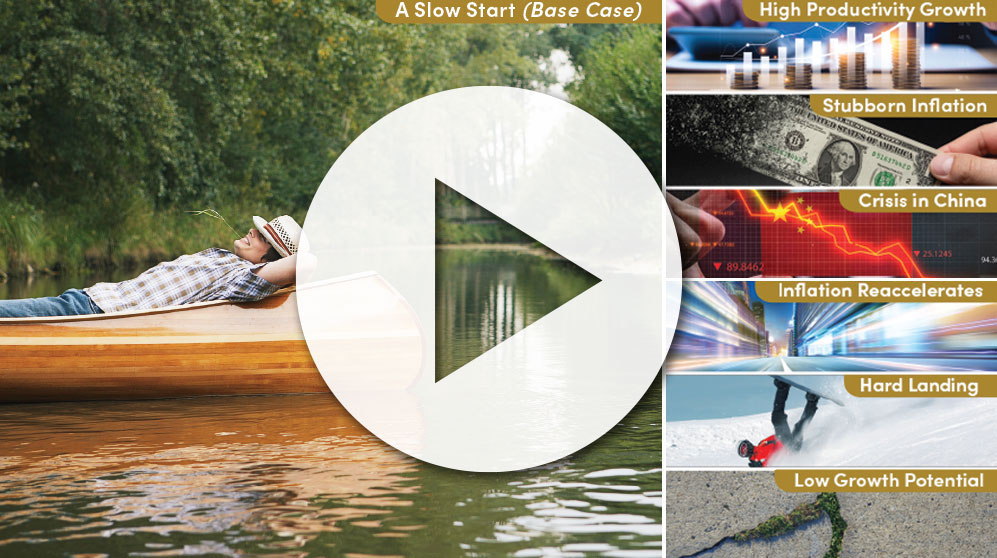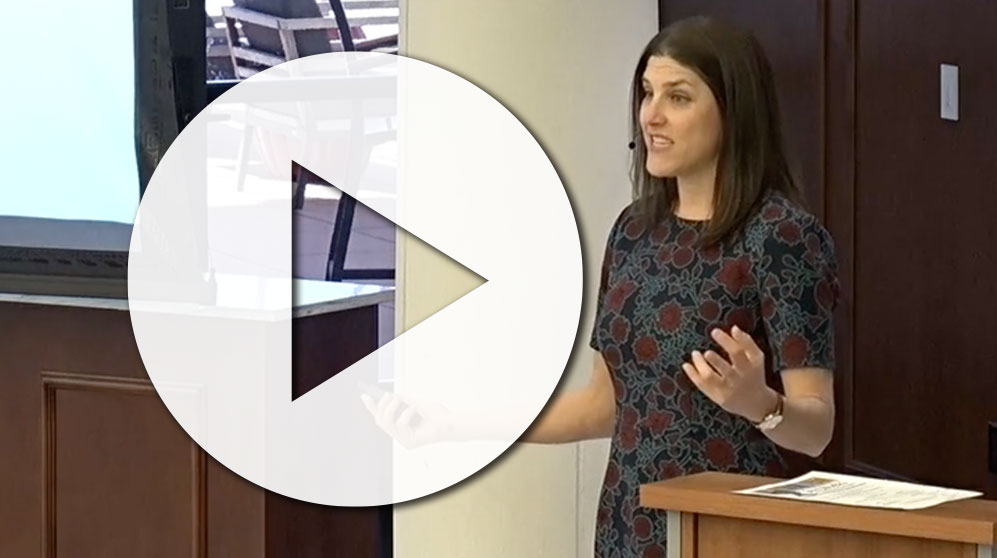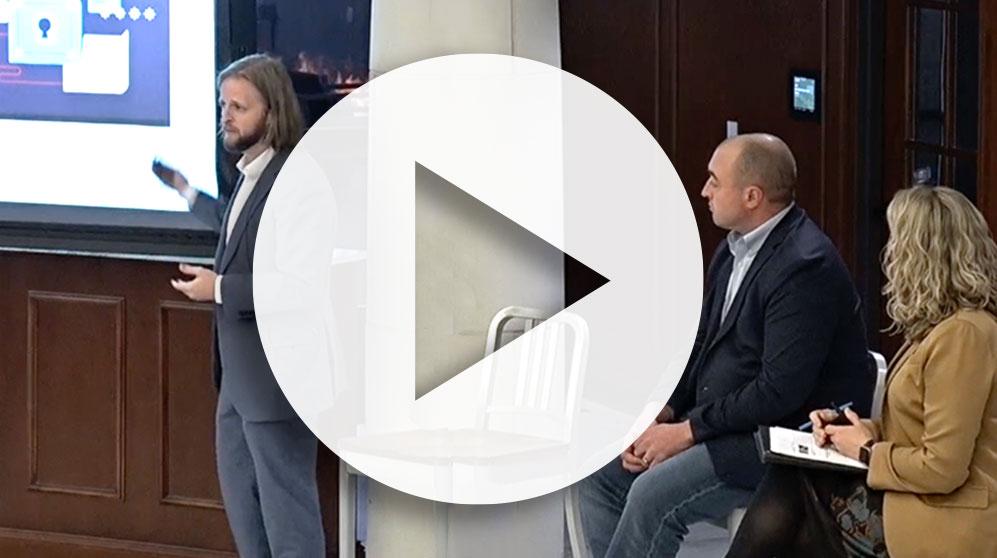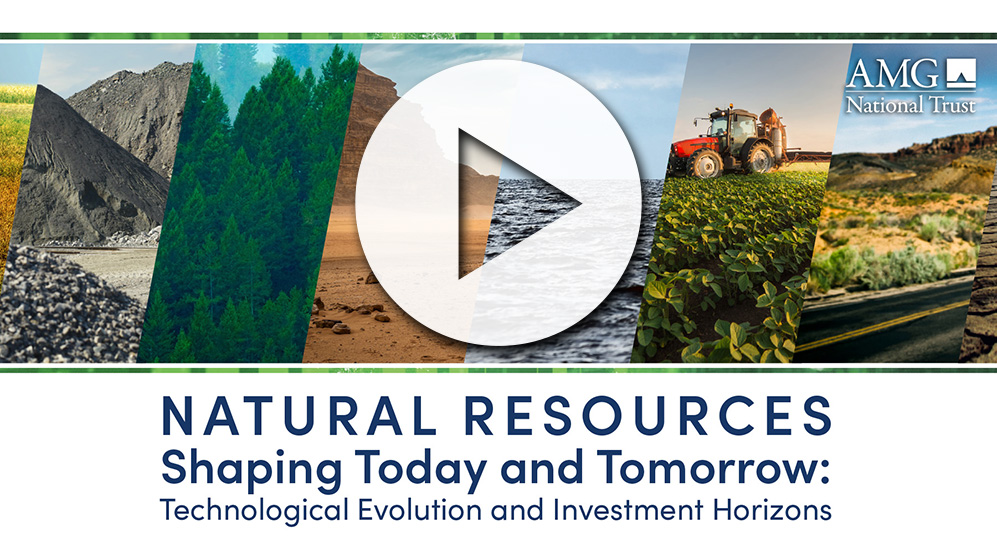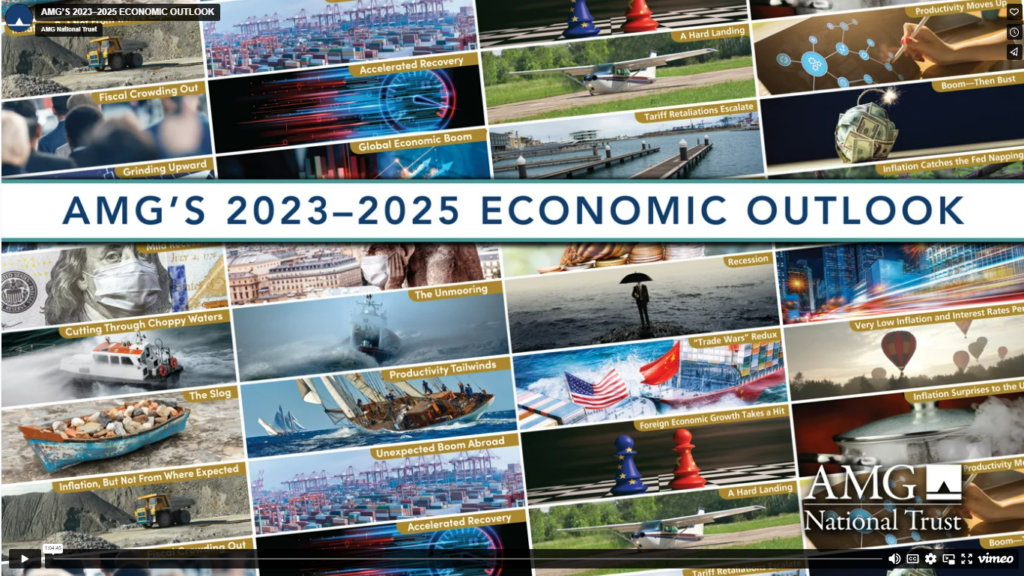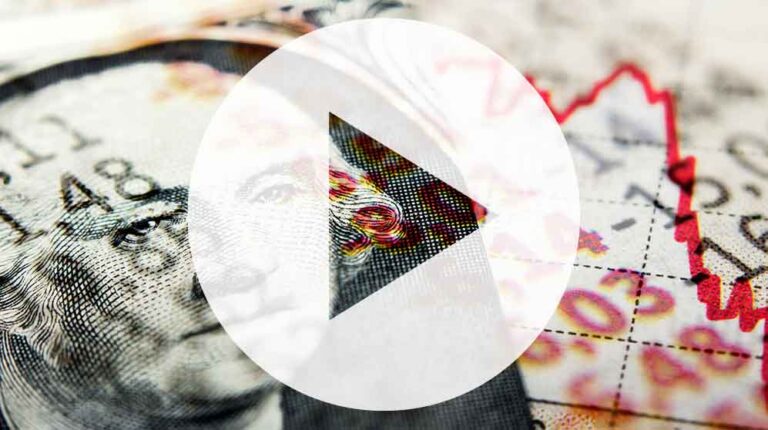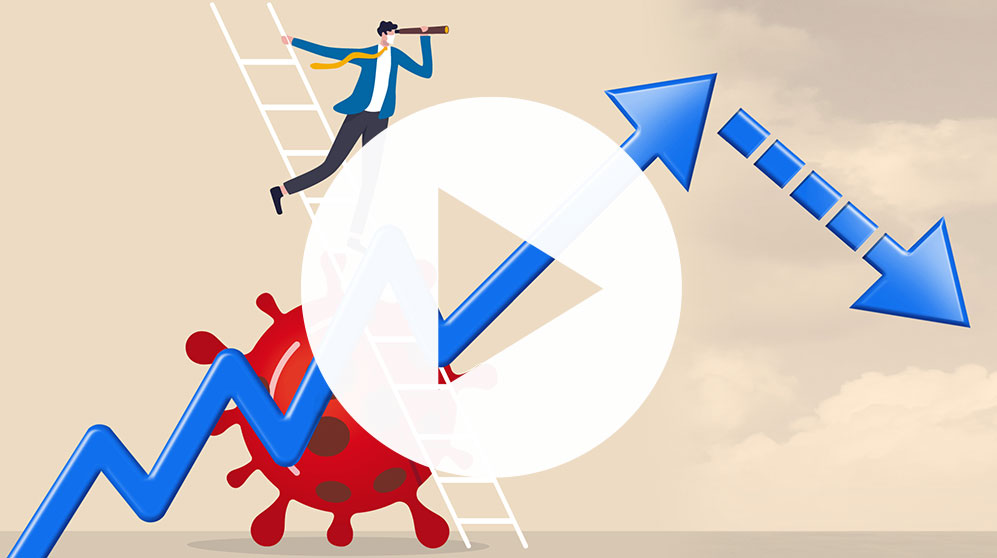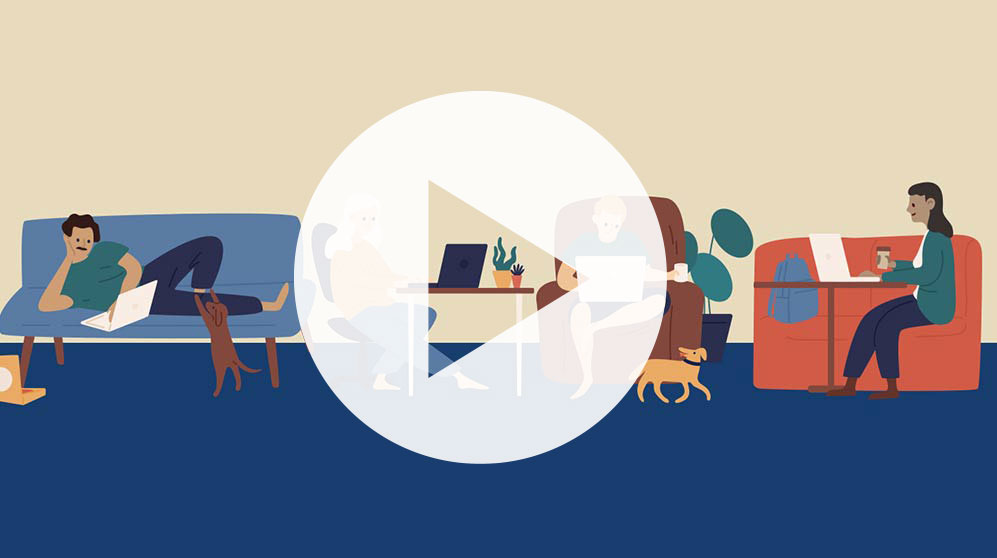The Next Stage of the COVID-19 Crisis
• 7 min read
Get the latest in Research & Insights
Sign up to receive a weekly email summary of new articles posted to AMG Research & Insights.
"*" indicates required fields
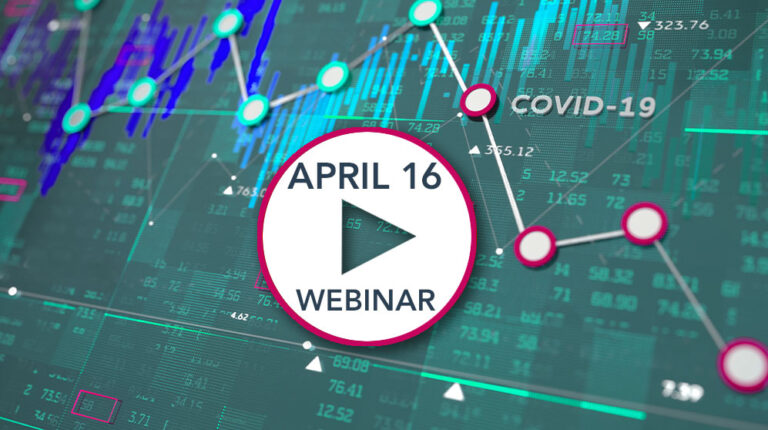
Click the “Play” Arrow on the image above to view our 4/16 webinar recording.
WEBINAR SUMMARY: THE NEXT STAGE OF THE COVID-19 CRISIS
America searches for ways to safely reopen economy
How soon America safely starts reopening shuttered businesses, rehiring millions of unemployed workers and generally rebooting its economy depends initially on one factor.
COVID-19 testing.
Who has had the disease, who hasn’t and who is likely to be infected, and in which regions of the country? Those are questions that only widespread testing can answer. The results will in large part determine when and how quickly the United States emerges from its economic and social lockdown.
“The course of the COVID-19 disease will be the main factor in determining how much the output of the economy falls, how long the downturn lasts and how fast it recovers,” AMG Economist Dr. Michael Bergmann said April 16 during AMG’s briefing on the pandemic’s economic impact. Click here to watch the briefing.
The pandemic appears to be at or past its peak in most of the United States, but only accurate, widespread testing will reveal the disease’s true infection rate for the general population. That is doubly important because maybe up to 25% of those infected show no symptoms and can unwittingly transmit the disease. Right now, statistical research suggests that each person afflicted with COVID-19 may potentially infect 1.4 to 5.7 other people, depending on mitigation efforts. By comparison, someone with measles may infect 12 to 18 other people.
Accurate infection data would allow government authorities to better determine when and where companies can resume business without reigniting a second wave of outbreaks. Only a vaccine will allow the nation to return to some semblance of normal, and 79 programs worldwide are working toward that goal. But a vaccine is not expected to be widely available until the first half of 2021 at the earliest.
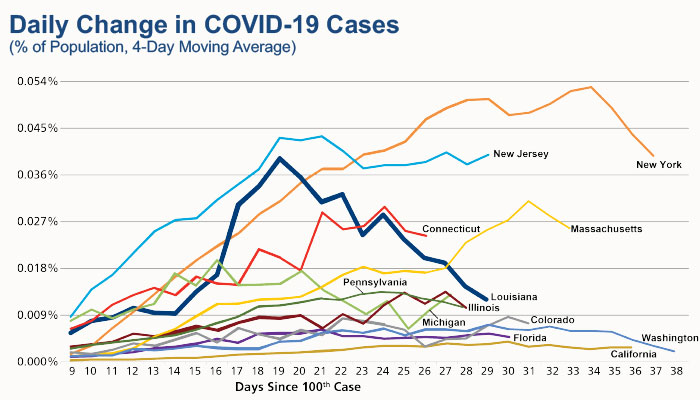
That’s why testing is so important in the interim.
According to Dr. Scott Gottlieb, former head of the U.S. Food and Drug Administration, 2-3 million people per week should be tested as the nation transitions back to work.
One promising new test comes from Abbott labs, which has developed a new FDA-approved antibody test that shows in less than 15 minutes whether someone has had COVID-19. The company expects to ship 1 million tests this week and 4 million in April, ramping up to 20 million in June.
AMG is closely watching China, South Korea, and Singapore, which have been cautiously reopening their economies, to see if those countries experience a second wave.
“Some have seen new cases emerge, particularly around travel and re-entry into the country,” said Chris Jacoby, Senior Vice President of Private Capital. “They are quick to respond with testing, tracking, and isolation to avoid a renewed spike in cases. So far, they have avoided a second ramp up.”
Experts worry that a resurgence of the disease when reopening countries would force them to shut down again and dramatically prolong the economic agony.
The desire to get back to work is heightening innovation related to testing worldwide. Singapore is using walk-through screening machines at airports to detect incoming passengers with fevers. South Korea is using sophisticated computer applications to trace an infected person’s movements and track down individuals they came in contact with so those people can be tested and quarantined. U.S. companies are talking about testing employees at office and factory doors so they can return to work as soon as possible. Companies like Apple and Google are coming up with health passports – ways to identify people who have recently been tested, so they can operate more freely in society.
“America will innovate and find a way to reopen as soon as possible,” said AMG Board Chairman Earl Wright.
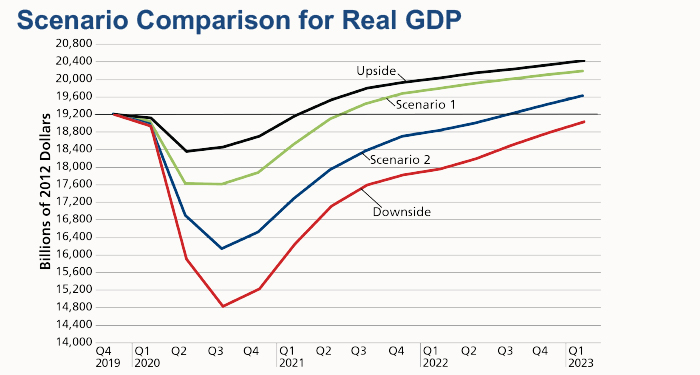
ECONOMIC SCENARIOS
Based on the pandemic’s possible projected courses, AMG continues to refine two differing trajectories for the U.S. economy.
Scenario 1 – COVID-19 mitigation largely successful
- Q1 2020 – GDP down 3.5% annualized.
- Q2 – GDP down 26.8% annualized.
- Q3 – GDP down 0.3% – staged return to work begins.
- Q4 – GDP growth turns positive.
- Q1 2021 – GDP grows 15.5% annualized, and recovery is complete by Q3.
Scenario 2 – COVID-19 mitigation takes longer but still helps
- Q1 2020 – GDP down 5% annualized.
- Q2 – GDP down in 37% annualized.
- Q3 – GDP down 17% annualized.
- Q4 – GDP growth accelerates dramatically, but recovery isn’t complete until Q4 2022.
“Although eye-popping growth figures show up in early 2021, they are deceiving,” Bergmann said. “That does not mean the economy is strong. It actually shows a moderate partial recovery of what we lost in the downturn.”
Expect 21 months to three years of close to net-zero growth.
“In any case, it’s really important to look somewhat further down the road,” he continued. “With eventual containment, increased effectiveness in treatment and probable vaccine development, long-term economic potential shouldn’t be permanently impaired to any great degree, except in the worst downside scenario.”
STOCK MARKETS
As the government authorities search for a somewhat safe scenario for reopening the economy, stock markets are watching everything, particularly corporate earnings reports, which are coming out this month.
“They won’t be good,” said AMG’s Senior Vice President, Investment Group, Josh Stevens. “Second quarter will be even worse.”
That’s not unexpected, which is part of the reason the markets have remained buoyed since the historic plunge and March 23rd low. Investors are seeing other positives this week:
- The Federal Reserve has flooded the economy with liquidity. Its balance sheet is moving toward $11 trillion. For comparison, during the 2008 financial crisis, the Fed balance sheet hit $4.5 trillion, which many thought exorbitant.
- The federal Paycheck Protection Program (PPP), part of a $2 trillion government-relief program, in just 10 days has already allocated all $350 billion in forgivable loans to small businesses so they can keep workers employed during the shutdown. The Small Business Administration, which runs the PPP, normally averages 232 loans a day but made 103,508 per day since the program started April 3rd.
- COVID-19 social-distancing, work-at-home, and shelter-in-place efforts have proven largely successful in preventing the U.S. hospital system from being overwhelmed. Fewer than 70,000 Americans are expected to die of the disease.
Going forward, what investors most want to know is when will those strict mitigation rules start to be lifted because that’s when people will start to go back to work.
Optimism is keeping the bear market from becoming even worse, Stevens said, noting that stock-market fluctuations of 20% up and down would not be abnormal in the coming months.
“The headlines are going to be pretty bad,” Stevens said of coming weeks and months, “but the markets are looking forward, looking through it and looking at what’s going to happen on the other side.”
FUTURE
In what ways will the pandemic experience affect the United States and the world in the coming decade?
- Bergmann: Supply chains most likely will change. Countries will not want to be dependent on other nations for critical products, such as drugs and medical devices, or parts to make critical products. “Globalization is not dead, but it’s slowing, and that’s a little bit of a shame because it’s literally lifted billions of people out of poverty.”
- Wright: The pandemic is going to work against China and its quest to become the world’s largest economy by 2050. A third of all global growth in recent years has come from China, and regions like Europe are beholden to China for their growth. “That’s not what the world wants.” It will be tough for China, which depends on exports, to continue growing at the same rate it has, as the world moves to more regionalized production.
- Jacoby: Distributive infrastructure will change to become more responsive to demands. In particular, the convergence of technology and healthcare will only accelerate to provide better, faster and more reliable care. The pandemic has shown the need.
- Wright: Education will change, from kindergarten to college. The pandemic has shown how online studies can replace traditional classroom experiences. “You can take a Harvard class in Lincoln, Nebraska, without actually going there.” Online education can bring down skyrocketing college costs as well as improve quality. Why spend $30,000 to $40,000 when you can get the same or better education online for less money?
This information is for general information use only. It is not tailored to any specific situation, is not intended to be investment, tax, financial, legal, or other advice and should not be relied on as such. AMG’s opinions are subject to change without notice, and this report may not be updated to reflect changes in opinion. Forecasts, estimates, and certain other information contained herein are based on proprietary research and should not be considered investment advice or a recommendation to buy, sell or hold any particular security, strategy, or investment product.


